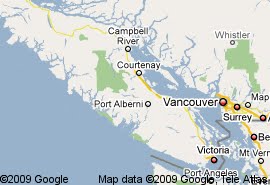
Think Green
Why Reuse Beats Recycling
by Annie B. bond, 1999
Reuse is often confused with recycling, but they are really
quite different. (Even those engaged in reuse frequently refer to it as
recycling.) Reuse in the broadest sense means any activity that
lengthens the life of an item. Recycling, on the other hand, is the
reprocessing of an item into a new raw material for use in a new
product–for example grinding the tire and incorporating it into a
road-surfacing compound. Reuse is nothing new. What is new is the need
to reuse.
Reuse is accomplished through many different methods: Purchasing
durable goods, buying and selling in the used marketplace, borrowing,
renting, subscribing to business waste exchanges and making or receiving
charitable transfers. It is also achieved by attending to maintenance
and repair, as well as by designing in relation to reuse. This may mean
developing products that are reusable, long-lived, capable of being
remanufactured or creatively refashioning used items.
Why is reuse so important? Because at the same time that it
confronts the challenges of waste reduction, reuse also sustains a
comfortable quality of life and supports a productive economy. With few
exceptions reuse accomplishes these goals more effectively than
recycling, and it does so in the following ways:
- Reuse keeps goods and materials out of the waste stream
- Reuse advances source reduction
- Reuse preserves the “embodied energy” that was originally used to manufacture an item
- Reuse reduces the strain on valuable resources, such as fuel, forests and water supplies, and helps safeguard wildlife habitats
- Reuse creates less air and water pollution than making a new item or recycling
- Reuse results in less hazardous waste
- Reuse saves money in purchases and disposal costs
- Reuse generates new business and employment opportunities for both small entrepreneurs and large enterprises
- Reuse creates an affordable supply of goods that are often of excellent quality.
Unique to reuse is that it also brings resources to individuals and
organizations that might otherwise be unable to acquire them.
The best case for reuse is made by the more than 1,000 examples of
individual, business, government and charitable reuse that are included
in Choose to Reuse.
by Nikki & David Goldbeck.Copyright (c) 1995 by Nikki & David Goldbeck. Reprinted by permission of Ceres Press.









